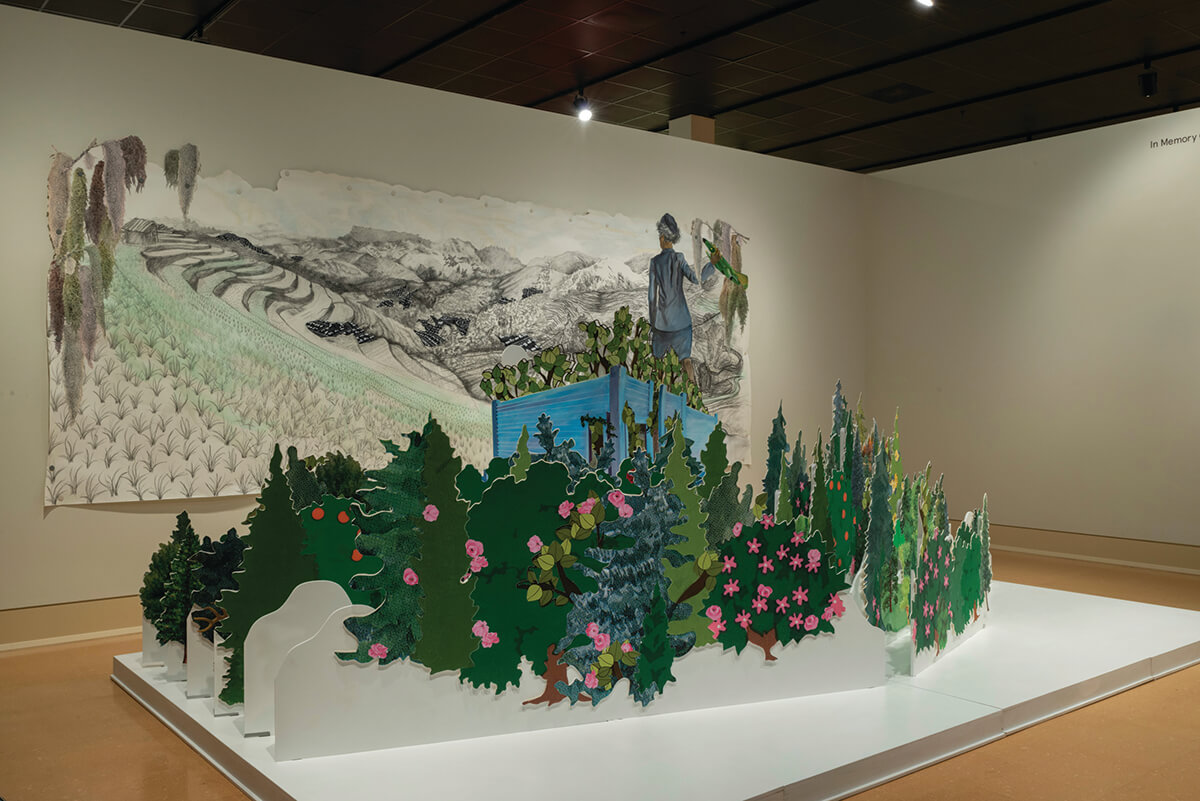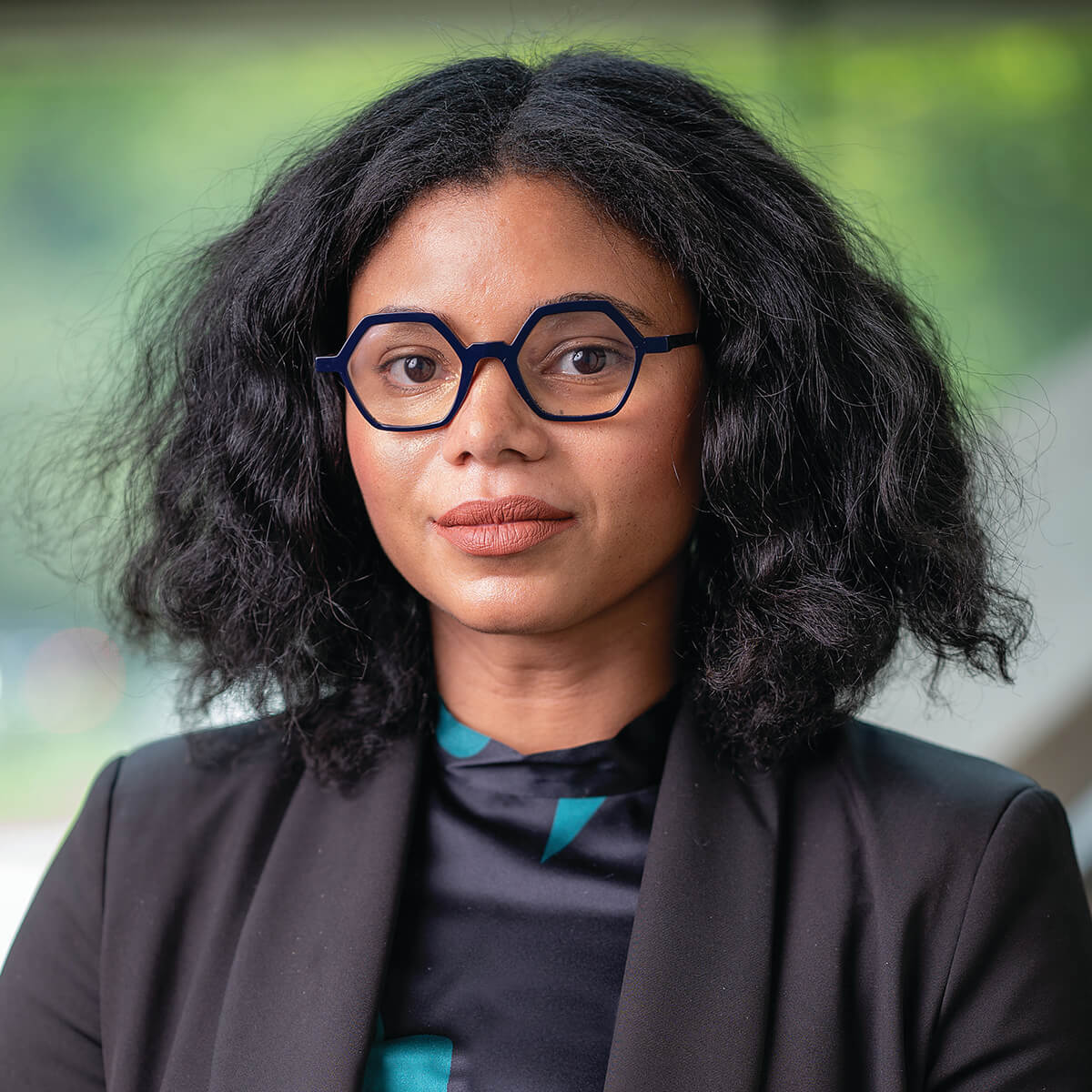Arts & Culture
New BMA Exhibit Points to the Continuing Influence of the Great Migration
BMA contemporary art curator Jessica Bell Brown discusses the diverse, historically informed, and deeply personal works—which are on view through January.

The exodus of more than six million African Americans from the rural South to the North, Midwest, and West between 1910 and 1970 was one of the most significant movements of people in U.S. history. Although chronicled by painter Jacob Lawrence in The Migration Series in 1941, as well as journalist Isabel Wilkerson in her award-winning 2010 book, The Warmth of Other Suns, the Great Migration also remains one of America’s unexplored stories of the 20th century.
Through January at the Baltimore Museum of Art, this epic saga is the subject of a new, large-scale, already acclaimed exhibition, A Movement in Every Direction: Legacies of the Great Migration. Co-curated by BMA contemporary art curator Jessica Bell Brown with Ryan N. Dennis, artistic director for Center for Art and Public Exchange at the Mississippi Museum of Art, it features works by 12 artists, including internationally recognized stars Carrie Mae Weems and Mark Bradford, as well as MICA graduate Akea Brionne, Baltimore-based Zoë Charlton, and Silver Spring-born photographer Larry Cook, among others.
The diverse, historically informed, and deeply personal works point not to the past but to the continuing influence of the Great Migration, both in the South and beyond, including cities like Baltimore.
The Great Migration is such a rich subject for artistic exploration. When did the idea arise for a joint exhibition with the Mississippi Museum of Art?
I started at the BMA in the fall of 2019, and when I was interviewing, I heard there was a desire to do a project around the Great Migration. It was in discussion by then-BMA director Chris Bedford and the current director of the MMA, Betsy Bradley, [as both cities] are associated with the Great Migration. One of the first studio visits I had was with photographer and archivist Webster Phillips, looking at his grandfather’s photos, some of which were published in Baltimore magazine’s Great Migration cover story [February 2020]. So, there was already a conversation happening around the Great Migration and Baltimore and this wider history when I got here. It was kind of amazing.

Do you have a family connection to the Great Migration?
I had never really considered my family, who stayed in the South, as having a migration narrative. But when you reframe it and ask the question differently [not why people left, but why they stayed], it allows for a more expansive understanding of the kinds of choices that folks had to make for their survival and for their thriving.
Larry Cook, whose work includes vintage pictures of his family and photographs he shot while exploring his Southern roots, is one of the many artists who stands out. He teaches in D.C., at Howard University, and is an incredible conceptual photographer.
The vernacular side of his photography has been unfolding and, for the Great Migration, he focused on his paternal side of the family for his investigation. All the artists were asked to think about their relationship to the Great Migration, their relationship to the South, and unpack how it shows up not only in their personal stories, but also their work. What emerged out of it for Larry was a reckoning with his estranged relationship with his father.
Can you tell us about Mark Bradford’s entry?
People here will recall his 2018 BMA show, Tomorrow Is Another Day. Mark talked about his family history in ways that are painfully common across many of the artists’ families—and many families of the Great Migration. He wanted to honor the spirit of his mother and maternal ancestors, who were entrepreneurs and self-starters and truly made something out of nothing. He dug into [The] Crisis magazine, which was the publishing arm of the NAACP, and his whole project is about language, space, and history.
He found deep resonance with one advertisement for a place called Blackdom, New Mexico, a town incorporated just before the start of the Great Migration, which was trying to attract Black families to start a new life in a new place with no Jim Crow laws. The top line of the ad just said, “WANTED,” which also evokes fugitive posters, criminality in general, and enslavement. The power of his painting is that it looks like it’s on fire, it looks alive. It’s so commanding, and the simplicity of that ad makes you think and dig deeper. It makes you realize, while there are so many stories of oppression and trauma, there’s also resilience and fortitude and abundance that we Black folks are constantly thriving toward.